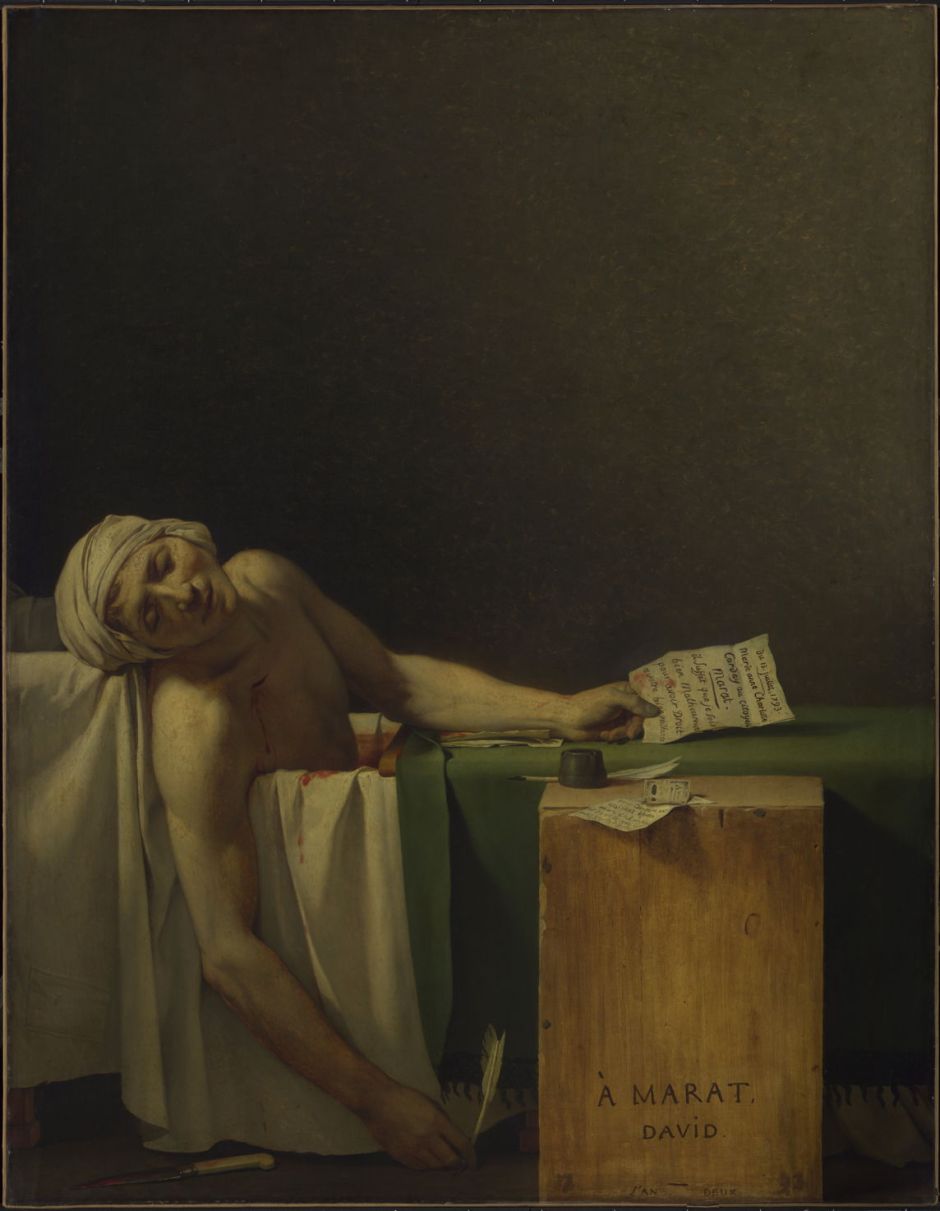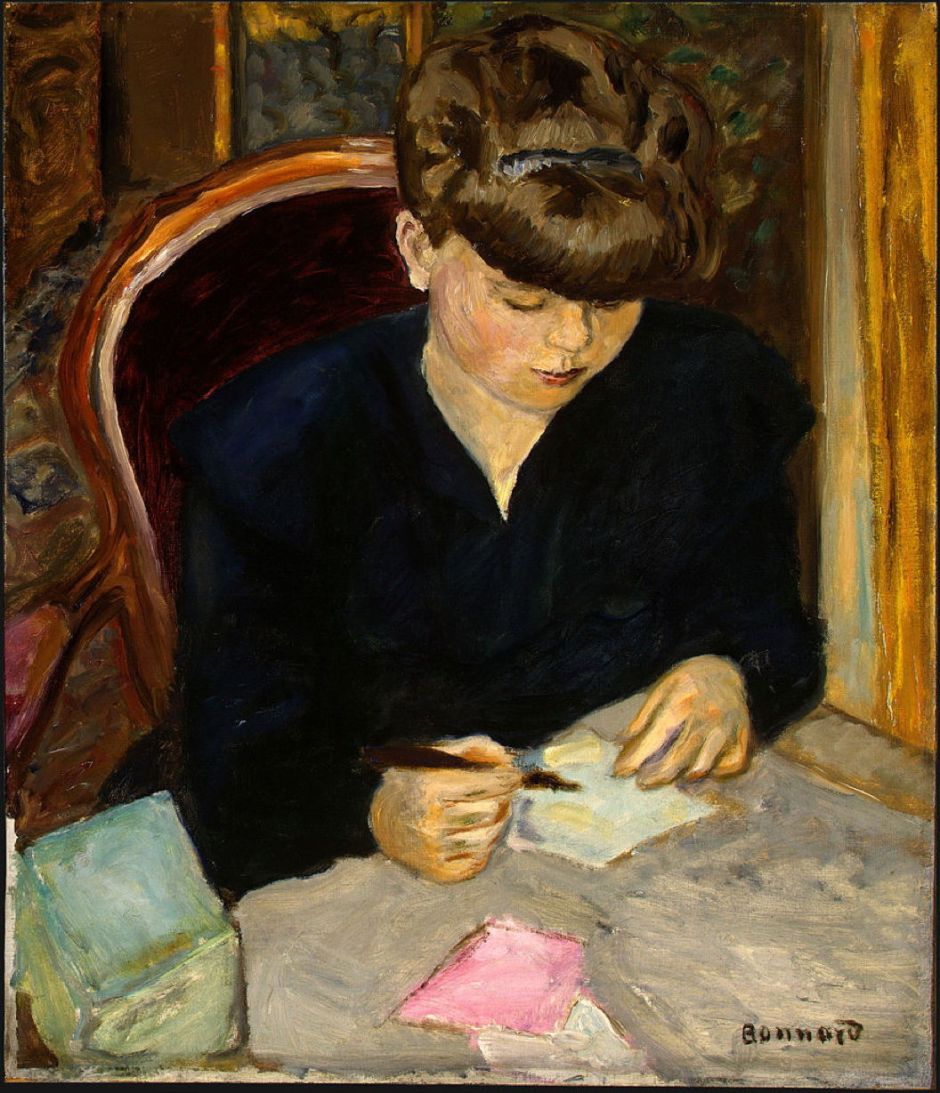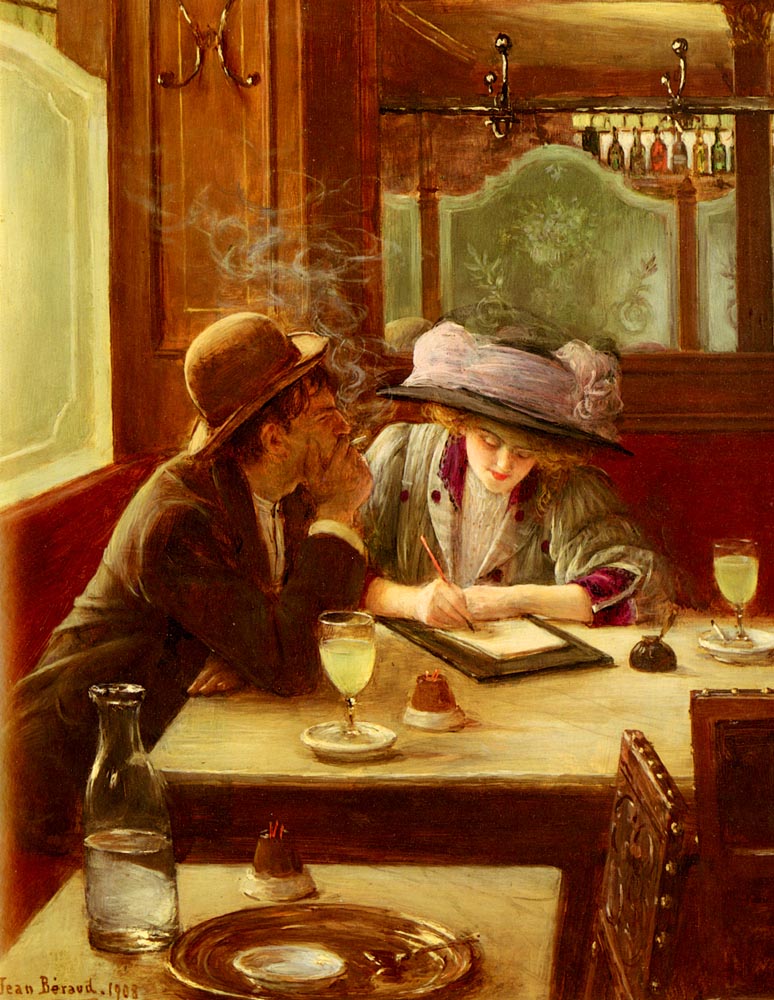In yesterday’s opening article about paintings of people writing, I showed how these changed during the Dutch Golden Age to reflect the introduction of education. What had been a skill confined to a small minority of well-educated individuals spread through the middle and upper classes, and even into some villages in the country.
Writing became much more than a social nicety which allowed gentlefolk to keep in touch with their friends: some of those who could write turned their skills to change society. With increasing numbers able to read, newspapers became more influential, and some journalists became revolutionaries.
Jean-Paul Marat was a leading member of the Revolutionary movement in France, an influential journalist through his newspaper, and a friend of the artist Jacques-Louis David, who had become embroiled in Revolutionary politics. Because of a severe skin disease, Marat spent much of the time in a bath to ease the intense itching. On the morning of 13 July 1793, Charlotte Corday, a young woman from Normandy, turned up at Marat’s house in Paris, asking to see him; his fiancée turned her away. She gained entry that evening, and started to give Marat the names of some local counter-revolutionaries. While he was writing them down, she drew a kitchen knife with a 15 cm (6 inch) blade from her clothing, and plunged it into Marat’s chest, killing him very quickly.
Corday admitted if not boasted of her actions, and on 17 July she was executed in public by guillotine. Marat became a martyr for the cause, after his friend David had organised his spectacular funeral, and an enduring painted memorial.

David shows Marat’s body slumped over the side of his bath, the murder weapon and his quill both on the floor, the pen still in his right hand, and a handwritten note in his left hand. Corday’s note gives the date, and addresses itself from her to Citizen Marat. It opens with “It suffices to say that I am very unhappy to qualify for your kindness”.
Fortunately, few writers or journalists met similar fates, and the relentless development of education became more popular in painting in the middle of the nineteenth century.

The only artist in the nineteenth century who seems to have painted any significant number of narrative works based on popular contemporary writers is Robert Braithwaite Martineau (1826-1869). The Tate Gallery has two such paintings of his: above is Kit’s Writing Lesson (1852), showing a less than memorable scene from Dickens’ The Old Curiosity Shop. The other (not shown here) is Picciola (1853), based on the 1836 novel of the same name by the obscure French novellist Xavier Boniface Saintine (1798-1865).
Just as I showed three children from the Dutch Golden Age pooling their skills to answer a letter, there were also those who earned their living from more mundane writing.

Richard Dadd’s elaborate watercolour of an Eastern Letter Writer from 1863 must have originated from a sketch made when he was in the Middle East, showing a man writing a letter as a business service to another. To that, he has added more incongruous buildings and figures, such as the moustachioed villain at the left, giving the whole a slightly surreal touch.
The nineteenth century also saw a rise in the role and status of professions, whose members were among those who wrote on a daily basis.

Emmery Rondahl’s The Doctor’s Orders (1882) shows a country doctor writing a prescription, perhaps, for an older patient who is tucked up in a magnificent fitted bed in their own home. On the chair between them, in the centre of the painting, is a candle in a holder, a bottle of medicine, and a spoon.
One of the more curious myths about the early kings of Rome tells of a nymph who apparently dictated the city’s first codified laws to King Numa.

Ulpiano Checa’s The Nymph Egeria Dictating to Numa Pompilius the Laws of Rome (c 1886) offers a conventional account, with King Numa sat writing down the laws on scrolls of paper using a reed pen. Egeria appears as a simple and very naked nymph, in accordance with the linked legend of Numa and Egeria being lovers – which the biographer Plutarch denies.

Paul Louis Martin des Amoignes’ wonderful In the Classroom (1886) looks as if it may have been painted from photographs. One boy, staring intently at the teacher in front of the class, is caught crisply, pencil poised in his hand. Beyond him the crowd of heads becomes more blurred.
Towards the end of the century, writing had become so common that it featured in many paintings of domestic interiors.

Lesser Ury’s Woman at a Writing-Desk from 1898 is an everyday interior with a woman, a pianist perhaps, sitting writing at her bureau-style desk. The popularity of those bureaux was perhaps one mark of the achievement of education.

Carl Larsson’s Model Writing Postcards (1906) is an interesting painting, not only for the odd incongruity of its nude model who is engaged in writing postcards, but for its inclusion of two paintings within the painting. That on the easel at the left is presumably the painting on which Larsson and the model are currently working, and appears to be a figure study for one of the artist’s larger murals.

Pierre Bonnard painted a few interiors in which a woman is writing. The Letter from about 1906 is a conventional portrait of a well-dressed woman sitting at a table to write a letter, and may have used Anita Champagne as the model.

One of the last portraits painted of Bonnard’s former muse and patron Misia Natanson (or Sert), Misia Godebska Writing, was painted in about 1910. Although a basic view of her head and shoulders, there is a little mirror play to reveal her chignon.

My final painting, Jean Béraud’s The Letter from 1908, offers a glimpse into the café culture of the years prior to the First World War. The man looks rough, and is unshaven, although the woman is elegantly dressed, and engaged in writing a letter. In front of each of them is a glass of absinthe, notorious for the severe forms of alcoholism with which it was associated.
Six years later, far too many of the men of Europe were writing from the trenches to their loved ones. What had started out as a means of keeping accounts on clay tablets had changed society.

